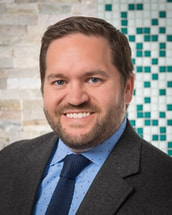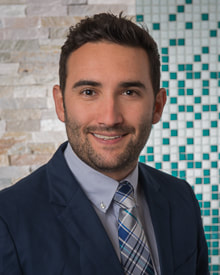Obsessive-Compulsive Disorder (OCD) is an anxiety disorder consisting of the presence of obsessions, compulsions or both. Content of obsessions can vary, but are intrusive and unwanted, and typically cause distress. Compulsions are repetitive behaviors or mental acts the individual feels driven to do to alleviate anxiety or prevent a dreaded event. Children may not realize these behaviors are unreasonable or excessive.
OCD has a strong genetic component, and even more pronounced with childhood-onset OCD. A first-degree relative of an individual with childhood-onset OCD has a risk 10-fold normal population. The point prevalence in children and adolescents is 0.5%. There is high comorbidity of OCD and Tourette's (or other tic disorder) and ADHD, and other anxiety disorders. Comorbidity rates of OCD and Autism Spectrum Disorder vary widely depending on the study. However, there is significant overlap between symptoms of OCD and rigidity/ritualistic behavior seen in Autism Spectrum disorders.
The most commonly reported obsessions in children and adolescents include fears of contamination, followed by worries related to harm coming to themselves, family or fear of harming others. Common compulsions include cleaning, counting, checking and repeating/rituals. The most-used clinical scale is the Children's Yale Brown Obsessive-Compulsive Scale (CYBOCS), which has both a checklist and a scale.
A typical first-line treatment for mild-moderate OCD in children and adolescents is cognitive-behavioral therapy (CBT). However, a multi-site NIH study, the Pediatric OCD Treatment Study (POTS), showed medication and CBT combination therapy as superior to either treatment alone.
Four medications are FDA approved for use in pediatric OCD. Sertraline for age >6 (50-200mg), Fluoxetine >7 (20-60mg), Fluvoxamine >8 (up to 200mg), and the tricyclic Clomipramine >10. Though not FDA-approved, atypical antipsychotic agents have evidence for efficacy as an adjunctive therapy for OCD as well.
Sources:
OCD has a strong genetic component, and even more pronounced with childhood-onset OCD. A first-degree relative of an individual with childhood-onset OCD has a risk 10-fold normal population. The point prevalence in children and adolescents is 0.5%. There is high comorbidity of OCD and Tourette's (or other tic disorder) and ADHD, and other anxiety disorders. Comorbidity rates of OCD and Autism Spectrum Disorder vary widely depending on the study. However, there is significant overlap between symptoms of OCD and rigidity/ritualistic behavior seen in Autism Spectrum disorders.
The most commonly reported obsessions in children and adolescents include fears of contamination, followed by worries related to harm coming to themselves, family or fear of harming others. Common compulsions include cleaning, counting, checking and repeating/rituals. The most-used clinical scale is the Children's Yale Brown Obsessive-Compulsive Scale (CYBOCS), which has both a checklist and a scale.
A typical first-line treatment for mild-moderate OCD in children and adolescents is cognitive-behavioral therapy (CBT). However, a multi-site NIH study, the Pediatric OCD Treatment Study (POTS), showed medication and CBT combination therapy as superior to either treatment alone.
Four medications are FDA approved for use in pediatric OCD. Sertraline for age >6 (50-200mg), Fluoxetine >7 (20-60mg), Fluvoxamine >8 (up to 200mg), and the tricyclic Clomipramine >10. Though not FDA-approved, atypical antipsychotic agents have evidence for efficacy as an adjunctive therapy for OCD as well.
Sources:
- Kaplan & Sadock's Synopsis of Psychiatry tenth edition, DSM-5, Child and Adolescent Clinical Psychopharmocology fourth edition, WH Green.


